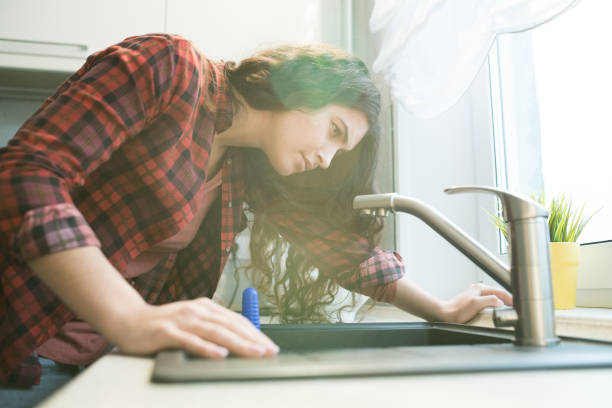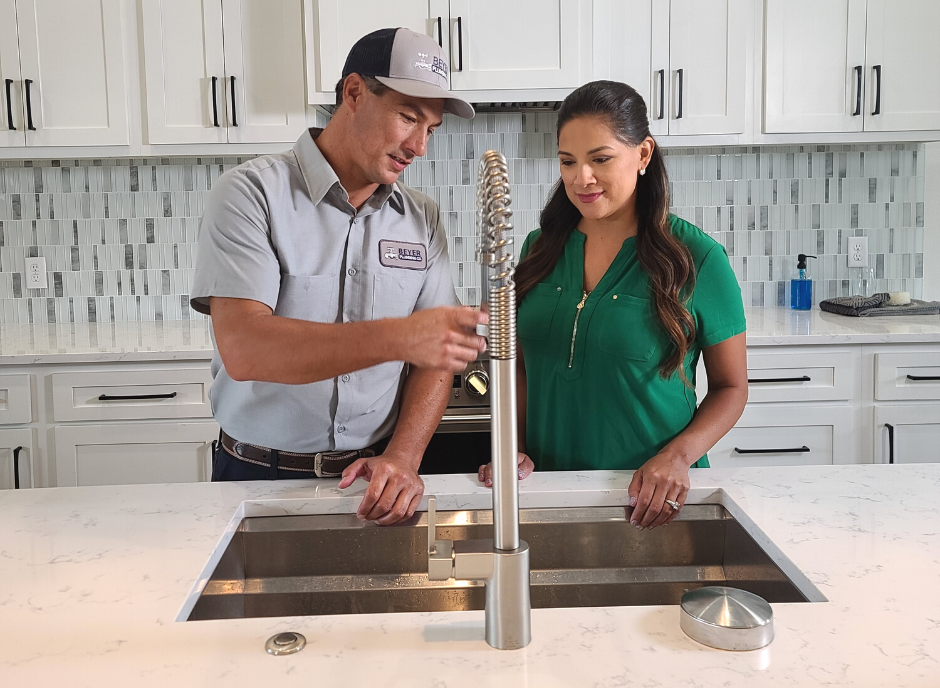Uncovering the Relevance of Dealing with a Faulty Faucet
Uncovering the Relevance of Dealing with a Faulty Faucet
Blog Article
Were you in search of insight about Water Dripping from Faucet: Why and How to Fix?

Leaking taps might seem like a minor trouble, however their impact exceeds just the aggravation of the noise. From drainage to incurring unneeded economic costs and health and wellness dangers, overlooking a leaking tap can cause various consequences. In this write-up, we'll delve into why it's critical to address this typical home issue promptly and effectively.
Waste of Water
Environmental Influence
Trickling faucets add substantially to water waste. According to the Environmental Protection Agency (EPA), a solitary faucet trickling at one drip per secondly can lose more than 3,000 gallons of water per year. This not just strains water sources but additionally affects ecosystems and wild animals dependent on them.
Step-by-Step Guide to Dealing With a Dripping Faucet
Devices Required
Before trying to fix a leaking tap, collect the needed tools, consisting of a flexible wrench, screwdrivers, substitute parts (such as washers or cartridges), and plumber's tape.
Typical Tap Issues and Their Solutions
Recognize the type of tap and the specific issue causing the drip. Common issues include damaged washers, corroded valve seats, or faulty O-rings. Refer to manufacturer instructions or online tutorials for step-by-step guidance on repairs.
Financial Prices
Enhanced Water Expenses
Beyond the environmental influence, trickling faucets can inflate water bills significantly. The built up waste with time converts into higher energy expenditures, which might have been prevented with prompt repair services.
Prospective Home Damage
Moreover, long term trickling can result in harm to fixtures and surface areas surrounding the tap. Water accumulation can trigger discoloration, deterioration, and even architectural concerns if left ignored, causing additional repair service prices.
Health Problems
Mold and Mildew Development
The constant presence of wetness from a trickling tap creates an excellent environment for mold and mildew growth. These fungis not just endanger indoor air quality however additionally posture wellness threats, specifically for people with respiratory system problems or allergic reactions.
Waterborne Diseases
Stagnant water in dripping taps can come to be a breeding place for microorganisms and various other microorganisms, enhancing the risk of waterborne diseases. Contaminants such as Legionella bacteria grow in stagnant water, possibly causing serious ailments when consumed or breathed in.
Do it yourself vs. Expert Repair work
Pros and Cons of DIY Repair Service
While some might try to repair a dripping faucet themselves, do it yourself repair services include their own collection of obstacles. Without appropriate knowledge and devices, do it yourself efforts can aggravate the problem or lead to insufficient repair work, prolonging the issue.
Benefits of Employing a Professional Plumber
Employing an expert plumber ensures that the underlying root cause of the dripping faucet is resolved efficiently. Plumbing professionals possess the experience and equipment to identify and fix tap concerns successfully, saving time and lessening the threat of further damage.
Ecological Responsibility
Specific Payment to Conservation
Taking obligation for dealing with trickling taps straightens with more comprehensive initiatives towards water conservation and ecological sustainability. Every person's activities collectively make a considerable impact on preserving precious sources.
Sustainable Living Practices
By prioritizing punctual fixings and embracing water-saving practices, individuals add to lasting living methods that benefit both existing and future generations.
Preventive Measures
Normal Maintenance Tips
To avoid trickling faucets, execute regular maintenance such as cleansing aerators, checking for leakages, and replacing damaged parts without delay. Additionally, consider mounting water-saving devices or upgrading to a lot more efficient fixtures.
Value of Prompt Repairs
Attending to trickling taps as soon as they're observed prevents further water wastage and prospective damage, eventually conserving both water and cash in the long run.
Impact on Residential Property Worth
Assumption of Well-Maintained Building
Keeping a residential or commercial property in good condition, including dealing with maintenance issues like trickling faucets, enhances its regarded worth and value among potential customers or renters.
Influence on Resale Worth
Qualities with well-maintained plumbing components, consisting of faucets, command greater resale values in the property market. Dealing with trickling faucets can add to a positive perception throughout home inspections and negotiations.
Final thought
Resolving a dripping tap surpasses mere benefit; it's a necessary step towards preserving water, lowering financial prices, and guarding wellness and residential or commercial property. Whether with DIY repair work or expert support, doing something about it to take care of dripping faucets is a small yet impactful way to promote accountable stewardship of resources and contribute to a healthier, much more sustainable future.
How to Fix a Leaky Faucet: Step-by-Step Repair Guide
A leaky faucet may seem like a simple annoyance, but if it's not fixed promptly, that leak could cost hundreds to potentially thousands. From water damage to mold, mildew, and high water bills, even a tiny leak can be catastrophic if left unattended. Damage like this can even affect the overall value of your home, so it's important to take the right approach for leaky faucet repair. You may need the help of a plumber in some cases, but we've got a few tips you can try on how to fix a leaky faucet before calling the pros.
Four Faucet Types
When you're learning how to fix a leaky faucet, the first step is knowing what kind of faucet you're working with! There are four common types.
Cartridge Faucets
Cartridge faucets come in one- or two-handled varieties. In one-handled cartridge faucets, hot and cold water combines in a single cartridge. In the two-handled versions, hot and cold water are controlled separately and mixed in the faucet.
Ball Faucets
Ball faucets have a single lever you push up and down to adjust the pressure and rotate to change the temperature. A slotted metal ball controls the amount of water allowed into the spout.
Compression Washer Faucets
They're the oldest type of faucet, but they're still used in many homes — especially older ones. Compression faucets have two separate handles that, when turned, raise or lower the washer that seals a water valve. This valve stops water from flowing through the faucet when it is turned off.
Disc Faucets
Disc faucets rarely need to be repaired due to their maintenance-free design. The water flow is controlled by two discs — the upper one raises and lowers against a fixed lower disc, creating a watertight seal. If your disc faucet starts leaking, you may need to replace the seals or clean residue buildup from the inlets.
Fixing a Leaky Faucet
Step 1: Turn Off the Water
Whether you're learning how to fix a leaky bathtub faucet or how to fix a leaky kitchen faucet, always turn off the water supply to your working area when you're fixing a leak. The last thing you want is a flood added to your list of things to fix.
Look for the shutoff valves below your sink or around the tub and turn them clockwise to stop the water flow. If your faucet doesn't have shutoff valves, you may need to turn off the water for the whole house. Check to make sure it's off by turning the faucet on. If nothing comes out, you're ready to start the repair.
Step 2: Take Apart the Faucet
How you disassemble your faucet depends on the type of fixture you have. You can use a flathead screwdriver to remove the caps on top of the handle or handles for cartridge and compression faucets. Inside, you should see handle screws. Unscrew these with a screwdriver to remove the handle.
Disc- and ball-style faucets will typically have an inlet screw near the handle, and removing that will reveal the interior of the faucet.
Detach the Valve Stem
For cartridge- and compression-style faucets, you'll see the inner valve stem or cartridge once you remove the faucet handles. If you have a compression faucet, unscrew the brass valve stem. If you have a cartridge faucet, pull out the cartridge. If your cartridge has been in place for a while, it may require some tools or extra force to remove it due to mineral deposits.
Examine and Replace Parts
Once you've removed the parts, check them out to confirm what needs to be replaced. You may see corroded rubber washers, O-rings, stems, or cartridges. On a ball-style faucet, check the seats and springs for damage.
If you need to repair a leaky disc faucet, check the inlet and seals on the lower disc.
Once you determine what parts must be replaced, visit your local hardware store. Bring the damaged parts with you to ensure you can purchase the correct components to replace them.
Clean Valves and Faucet Cavity
If you've removed a stem or cartridge, you may notice mineral buildup in the faucet's threads. Use white vinegar to clean the valve seat by soaking it for a few minutes, then scrub it away with a soft toothbrush and rinse with warm water. You can also clean the interior of the faucet in the same way.
Reassemble the Faucet
Once your faucet is cleaned and the required parts have been replaced, it's time to reassemble it. Put the pieces back together and slowly turn the water supply back on. Doing this slowly is crucial because too much initial water pressure can damage the new hardware you've just installed.
https://homewarranty.firstam.com/blog/how-to-fix-leaky-faucet

As a devoted reader about Why Is It Important To Fix Your Leaking Tap/Faucet?, I assumed sharing that piece of content was essential. So long as you enjoyed our blog post plz do not forget to pass it around. Many thanks for your time. Come back soon.
Report this page